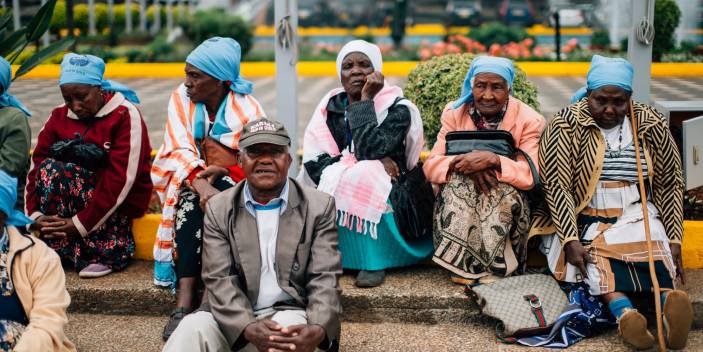
This is the final blog in a three-part series coinciding with our side event entitled Innovations on inclusion at the United Nation’s Commission for Social Development in February 2016. Professor Vappu Taipale, incoming trustee at HelpAge and chair at our affiliate in Finland Valli, discusses what makes an age-inclusive city.
There are two global demographic and geographic trends that will define the first half of the 21st century: ageing and urbanisation.
By 2050, there will be 2.1 billion people aged over 60, accounting for 21.5% of the global population, up from 12.3% today. In the same time period, the number of urban dwellers will grow from 54% to 66%, adding a further 2.5 billion people to cities worldwide.
The end result is clear: the number of older inhabitants of urban areas is set to increase substantially. But how can our cities respond to this? What infrastructure can be put in place to protect and promote our rights and improve our quality of life?
Availability to accountability: The seven “As” of age-inclusive cities
For urban environments to be inclusive of the needs of older people, there are seven guiding principles, all beginning with the letter “a”.
First and foremost, older people can never be included unless there are services available specifically to them. This is not just health and care services and support networks, but clubs where individuals can get together to socialise, dance, learn and experience the joy of life with other older men and women. In El Salvador there are thousands of these kinds of clubs, and ensuring this kind of wellbeing is crucial for everyone, let alone older people.
Yet, without the awareness of these services, they are irrelevant. Men and women living in cities must know they exist in order to make the most of them, and this means reaching out to inform us of what is available.
Across the world, 15% of people are living with some kind of disability, and the prevalence among older people is even greater. For cities to remain inclusive to these individuals, they must prioritise accessibility. It could mean greater prevalence of hearing loops, pedestrian crossings that remain on the green light longer, and public transport that welcomes older users. This would encourage us to engage with our local environments, boost social interaction and overall increase quality of life.
Globally, only half of older people receive a pension. In low and middle-income countries, this falls to a quarter. While many men and women continue to work, barriers to employment prevent others and, therefore, the affordability of services in cities is crucial in order for them to be inclusive.
Urban environments are complex, and the lives of those that reside within are diverse. This doesn’t diminish with age. Cities must be adaptable not just to the physical needs of older people, but to our different backgrounds, interests and priorities.
The penultimate “a” is adequacy. If services targeting older people are not up to scratch and effectively meeting our needs, it undermines efforts of inclusion and will lead to cities falling short on their objectives.
Lastly, there must be accountability in place to ensure plans are implemented and done so to an appropriate standard.
Taking the city back
Through observing these seven “As”, older people would be empowered to reclaim the space in our local urban environment that may have been lost as we aged. Through overcoming the barriers to inclusion, none of us would have to be prisoners in our own homes. Age-inclusive cities are a boon to independent living, allowing us to grow older where we grew up.
No one has sole responsibility to take cities back – a range of sectors have to take on the mantle to ensure urban environments become welcoming places for older people. From transportation and community planning, to the attitudes of individual businesses and people of all ages who make up society, there is a role to be played by everyone.
Read the other blogs in the United Nations Commission for Social Development series:
